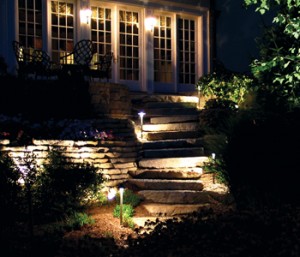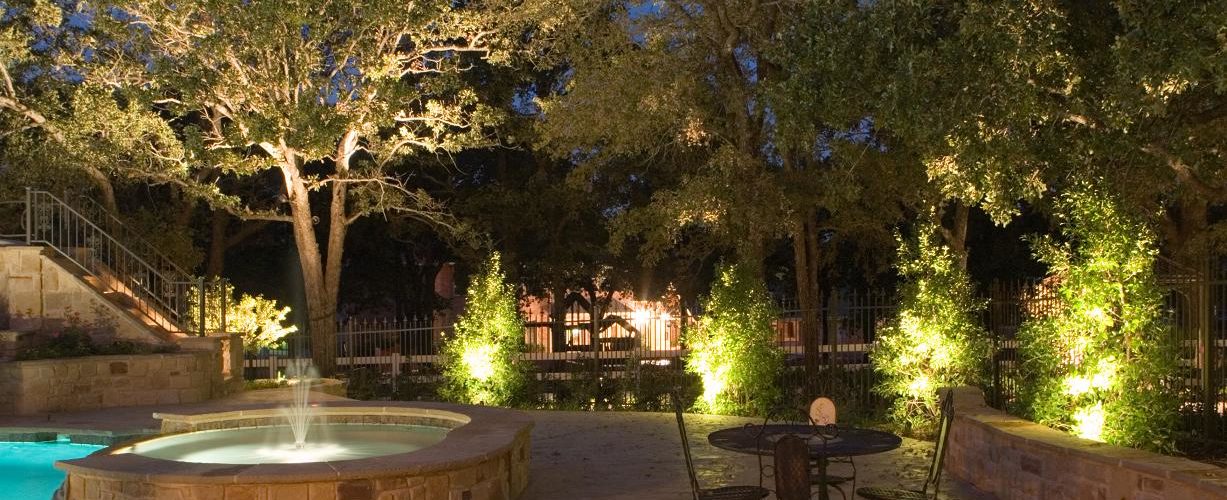
Landscape Lighting
<>
When you’re installing garden lights on your property, the first decision that you will have to make is what type of system to use. You choose from one of three options. You can install a low-voltage system that works off of a stepped-down 12-24 volt wire, a system built around the conventional power that comes from your home, and a solar powered system. Each has its pros and cons that you will have to weigh before you make your decision.
The first option that you have is to install lights that run on a conventional 120 volt housing system. For most people, this is the worst possible option. Because the wires are incredibly powerful, there is a significant shock hazard and you’ll need to seek professional installation. Not only that, the wires will all have to be buried several feet deep to ensure that no one gets shocked. Installation costs are at least $100, and sometimes up to $200, per lighting fixture.
The next option is low-voltage lighting. Low voltage lighting is slightly more expensive than solar garden lights are because it requires you to have an available socket that you can buy a transformer to attach to. The transformer steps down the current from the 120 volts in the power lines in your home to a much more manageable 12 volts. This removes all the shock hazards from installing the lights and lets you install them yourself. There’s also an incredibly large selection of low-voltage lighting fixtures that you can use from up lights to down lights.
Your final option for outdoor lighting is solar powered lighting. Solar powered lighting is cheaper than low-voltage lighting because you don’t have to install a transformer and you don’t have to pay any power bills because the lights run off the power of the sun. That means installation is also much easier because there’s no wires to run or transformers to install. Unfortunately, your options are limited with the fixtures because a solar cell needs to be placed on top and the lights need to be installed in areas that get sun a large portion of the day. This means that you won’t be able to install the lights in any areas that receive shade.
As an all-around option, low-voltage lighting is the best available for most homeowners. It costs a minimal amount to setup, unless you need to run wires to create a plug outside for the transformer, which would require you to hire a professional electrician. It’s also not incredibly hard to install. Once you’ve installed the transformer, all that’s required is to run the wires to the fixtures. Since there aren’t any shock hazards, you only need to hide the wires enough to remove any trip hazards and make your yard look aesthetically pleasing.
On top of this, low-voltage lighting offers you greater variety and more flexibility when you install your lights. You can place the lights anywhere you want because you don’t have to worry about them getting enough sunlight. And because the lights don’t need to have a solar cell on top of them, you have much more flexibility when it comes to choosing the fixtures. You can install anything from spotlights to recessed up lights.
Solar powered lights do have their place in a lighting scheme however. If you are only planning on lighting a few things or installing the lights in an area that gets a lot of light, such as lining your driveway with mushroom lights, solar powered lights can work really well.
While solar lights have their place, if you want your yard to look it’s best you need to install low-voltage lighting. You will simply be too restricted if you try to use only solar powered lights in your outdoor lighting plans.
<>



